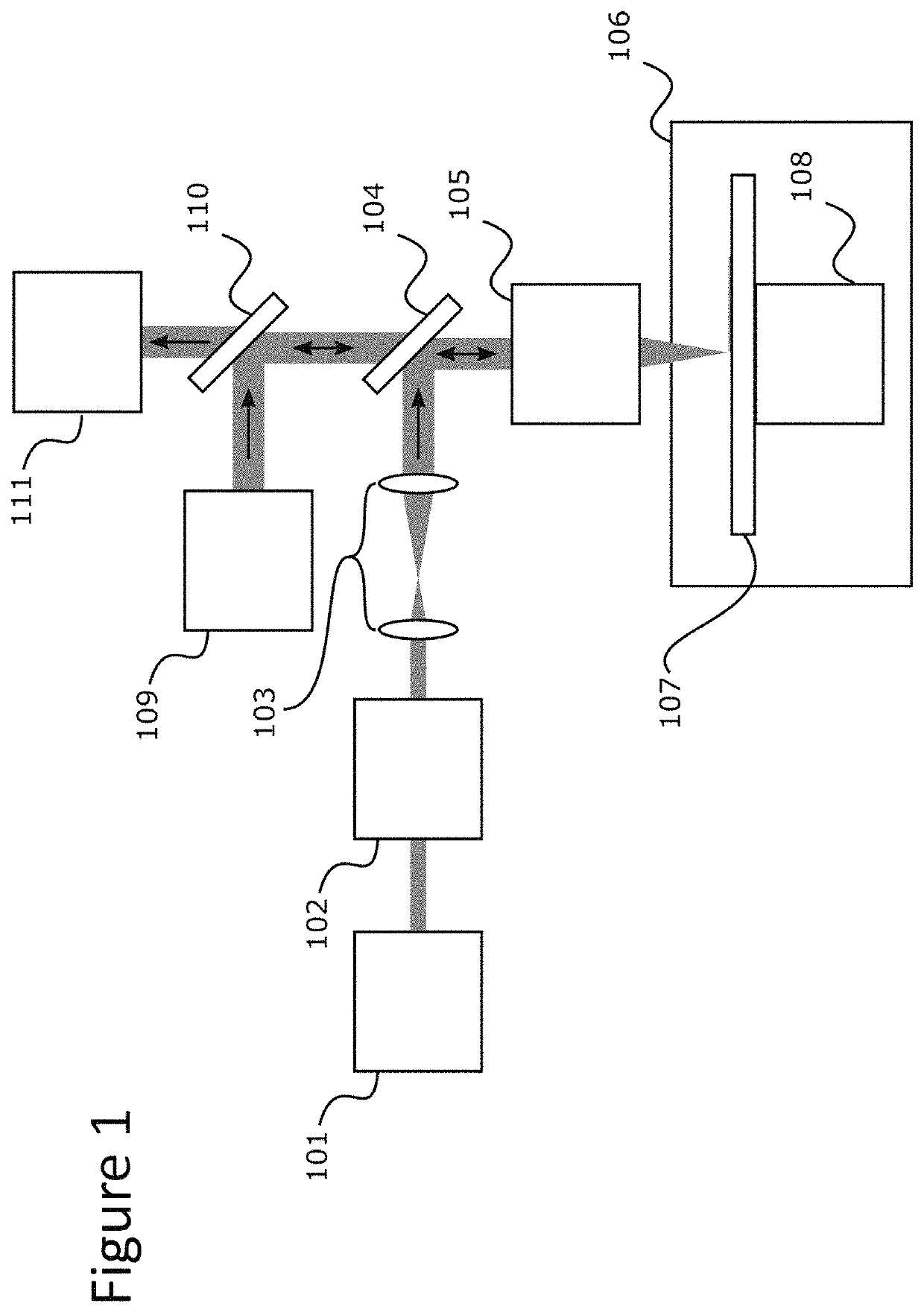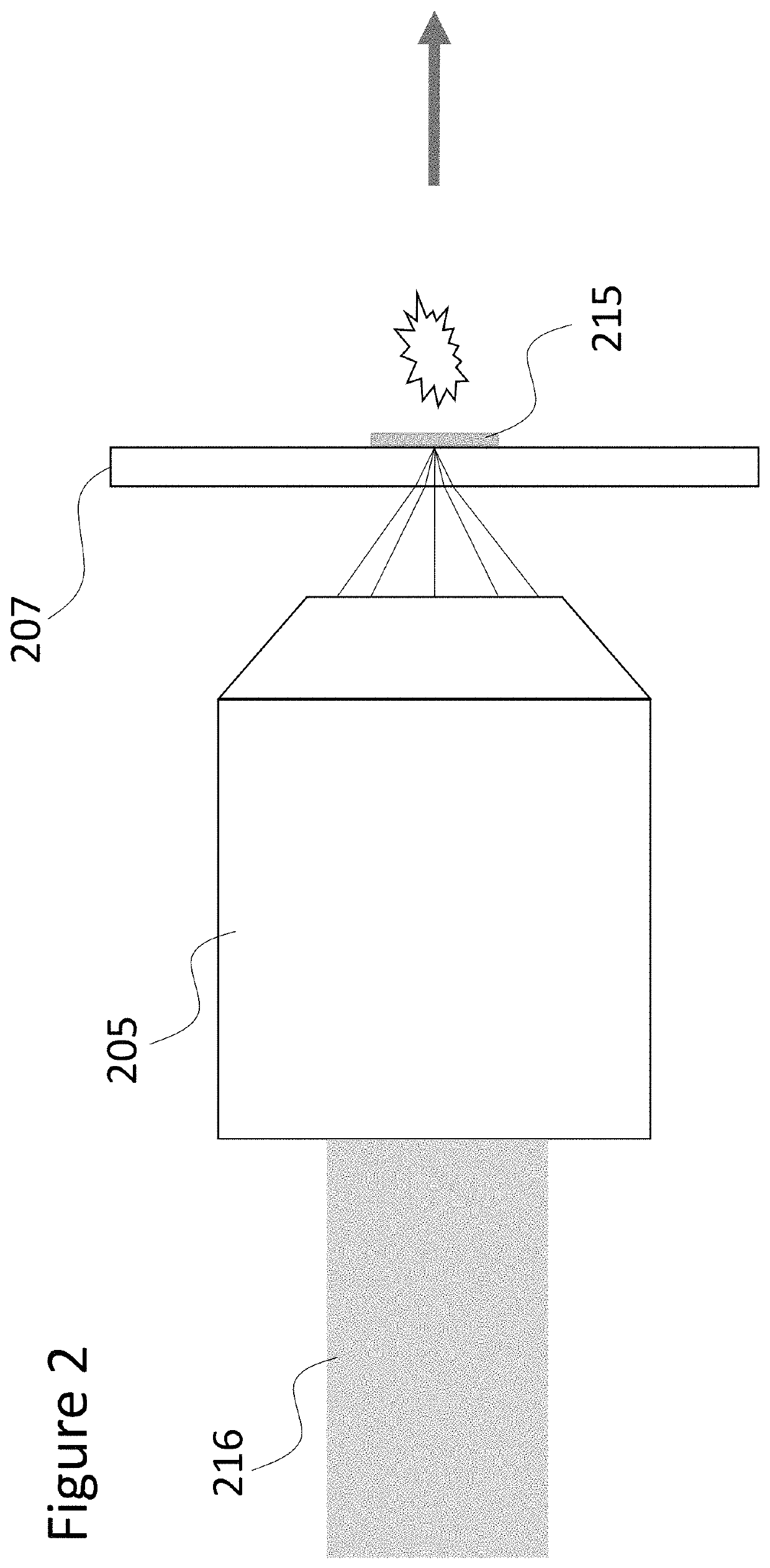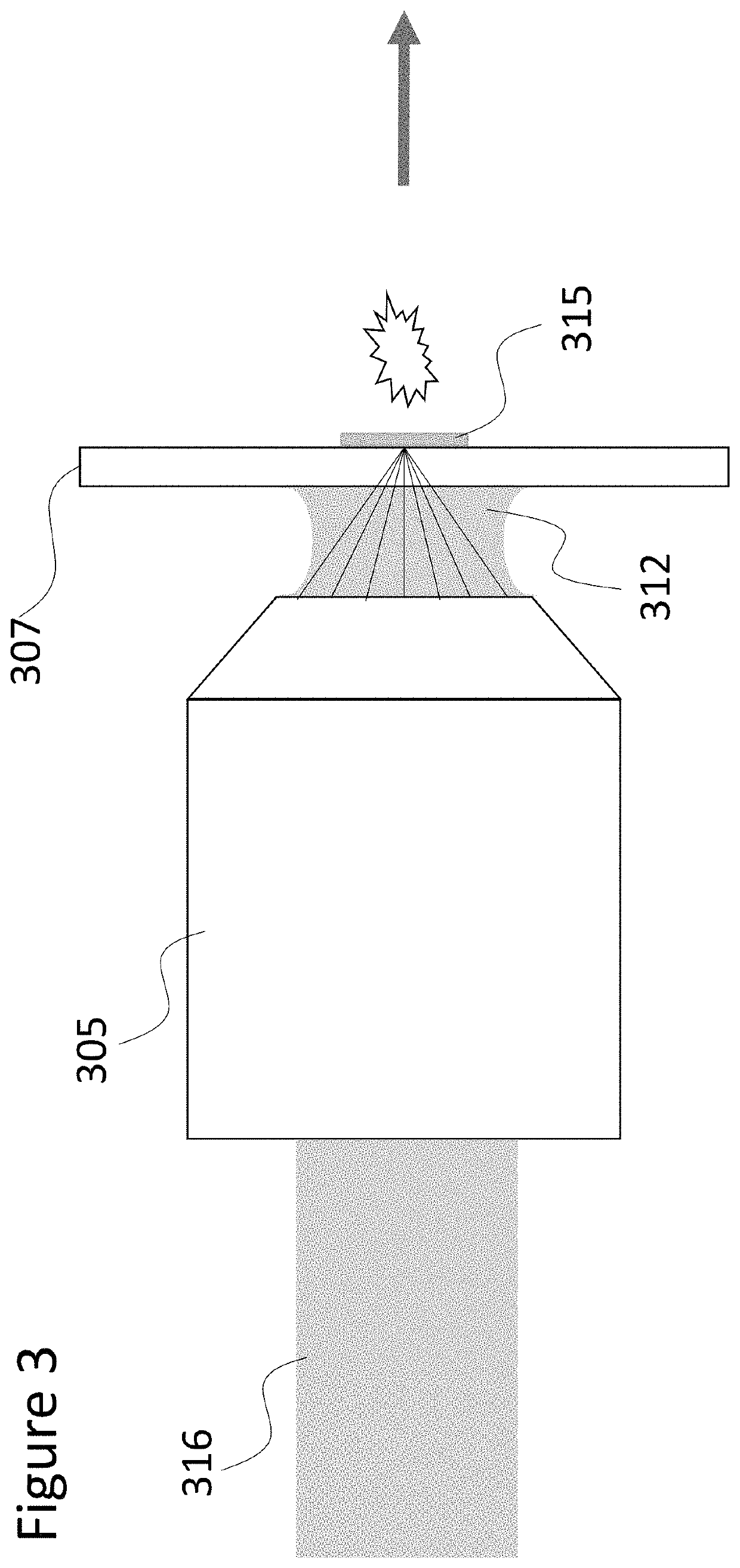High resolution imaging apparatus and method
a high-resolution, imaging apparatus technology, applied in the direction of instruments, spectrometer detectors, particle separator tube details, etc., can solve the problems of unpredictability of sample breakdown and fragmentation, and achieve the effect of increasing speed
- Summary
- Abstract
- Description
- Claims
- Application Information
AI Technical Summary
Benefits of technology
Problems solved by technology
Method used
Image
Examples
example 1
[0951]Protocol
[0952]The mouse gut was immersion fixed following organ harvesting using 2% PFA and 2.5% glutaraldehyde. The tissue was post-fixed with 2% Osmium Tetroxide for 1 hour. After dehydration the tissue sample was embedded in EPON resin and sectioned.
[0953]The 1000 nm tissue section was subjected to laser ablation and analyzed for the presence of osmium isotopes by Hyperion imaging system.
[0954]Results
[0955]FIG. 11 illustrates detection of abundant osmium isotopes (188Os, 189Os, 190Os and 192Os), as well as isotopes that are naturally low abundant (0.02% 184Os, 1.59% 186Os, 1.96% 187Os) present in the mouse gut tissue processed according to the standard immunoelectron microscopy protocols. The gut morphology is well defined with a dense outer layer of smooth muscle (upper left corner), mucosal epithelium with goblet cells and scattered stroma and immune cells beneath the epithelium.
[0956]Thus, electron microscopy 1 μm sections treated with 2% osmium tetroxide can be imaged f...
PUM
| Property | Measurement | Unit |
|---|---|---|
| wavelength | aaaaa | aaaaa |
| spot size | aaaaa | aaaaa |
| thickness | aaaaa | aaaaa |
Abstract
Description
Claims
Application Information
 Login to View More
Login to View More - R&D
- Intellectual Property
- Life Sciences
- Materials
- Tech Scout
- Unparalleled Data Quality
- Higher Quality Content
- 60% Fewer Hallucinations
Browse by: Latest US Patents, China's latest patents, Technical Efficacy Thesaurus, Application Domain, Technology Topic, Popular Technical Reports.
© 2025 PatSnap. All rights reserved.Legal|Privacy policy|Modern Slavery Act Transparency Statement|Sitemap|About US| Contact US: help@patsnap.com



